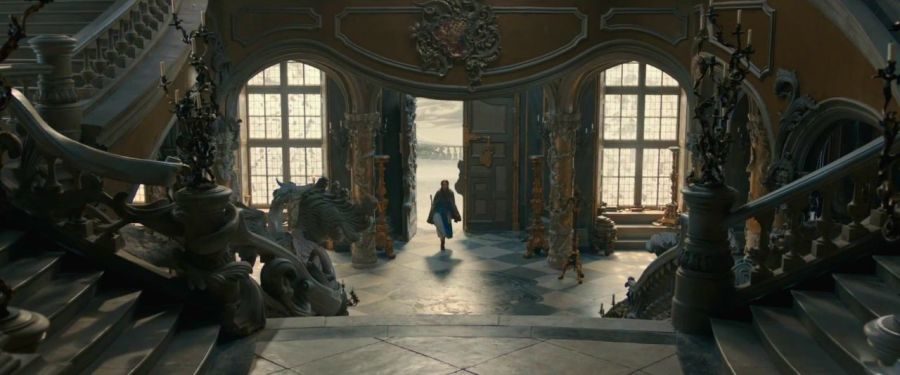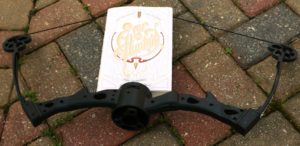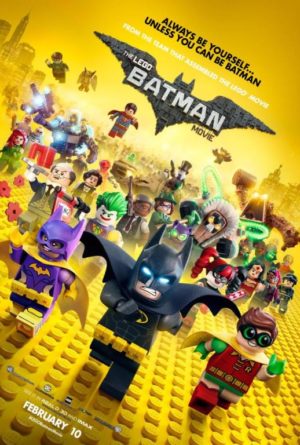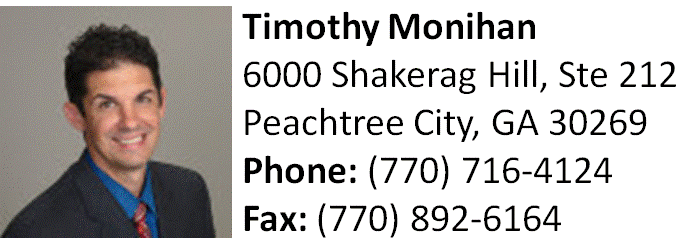Age before beauty
Classic stories don’t need retelling
Belle enters the Beast’s castle. The film, while visually striking, struggled with establishing a consistently captivating tone.
March 22, 2017
Disney’s live action “Beauty and the Beast” recently broke records with a 170 million dollar box office opening weekend. Was this economic success a function of the blockbuster’s cinematic brilliance, or was the fairy tale flick simply the only big name in theaters during one of Hollywood’s “dump months”? For the most part, the latter. “Beauty and The Beast” is neither nostalgic nor groundbreaking.
The story, as everyone knows, revolves around the unlikely romance between a bookish, adventurous girl Belle (Emma Watson) and the selfish prince-turned-troubled Beast (Dan Stevens), all against an 18th century French backdrop. The Beast inhabits a cursed castle, along with his servants, who have been cursed to live as talking household objects. The oldest known variant comes from the writings of Gabrielle-Suzanne Barbot, and by far the most well-known interpretation is Disney’s 1991 animated film.
This adaptation feels forced. The premise of a live action rendition of a Disney animated feature already seems more than unnecessary, and the more or less mediocrity of the execution even further highlighted this dispensability. The characters seem distant and unattached, nothing of consequence is shed on the original story, and the captivating je ne sais quoi of Disney is painfully absent. The film unceremoniously drags itself along to compensate.
But before diving into the key flaws, there are some areas where “Beauty and the Beast” shines. Much of this is due to a substantial budget. Nevertheless, it’s clear that a large amount of craftsmanship went into the film.
The sets, if nothing else, succeed in bringing the story to life. Whether it’s the homeliness of Belle’s village or the sculptural program of the Beast’s palace, the environment is decidedly intricate. There is also a heavily stylized and Versailles-esque look in the opening and closing sequences of the film. While this brings up the morally suspect nature of the source material, still provides an aesthetically pleasing touch to the mix. On the whole, the film succeeds as a visual medium.
“Beauty and the Beast” also benefited from a strong cast. Emma Watson’s Belle is understated but not at all un-compelling. Surprisingly effective was Luke Evans’ portrayal of Gaston, whose expressiveness and dash of swagger added dynamism to a film that sorely lacked it.
Other performances were inhibited. “Beauty and the Beast,” like many films of the modern era, boasts a full integration between live action and digital elements. This is surely a noble technological discipline, but with a subject matter so familiar, this experimentation proves problematic.
Many characters are rendered with CGI. This can often mean actors working in isolated and odd conditions in order to achieve even a semblance of realism, as was with Dan Steven’s portrayal of the Beast. There’s a lot of work to be done on the viewer’s part, too. The uncanny valley that CGI inhabits makes it much more difficult to believe the title characters in the film exist in the same space. Regrettably, this results in an inability for audiences to form an attachment to the characters.
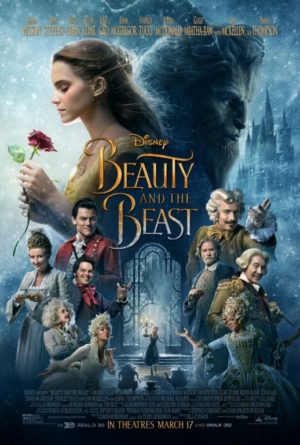
The film is riddled with pacing issues. Many scenes are simply boring and dragged on longer than necessary. The audience already knows the basic gist of the plot, so there was something more needed in order for this interpretation to be consistently entertaining. Despite only being twenty minutes longer than the 1991 film, the times between musical numbers and bonding montages overall felt tedious.
In addition, the film’s conclusion is confused. Belle and the Prince are together, but the shots are overwhelmed by the spectacle of an elaborate ball. There’s luxury, symmetry, and grandeur, and this seems an odd place to focus. Instead of emphasizing the triumphant nature of Belle and the Prince’s relationship, the film highlights the opulence that led him down the wrong path in the first place. This is where the excessively period-appropriate, aristocratic style proves to be a moral dilemma.
With regards to plot, many might think that it’s impossible to go wrong, considering the movie has a built-in story. The writers needed to compensate for the inherently derivative nature of the film. If “Beauty and the Beast” decided some added backstory would be a perfect way to address this problem.
Specifically, the parents of the title characters are further explored. In theory, this could have been a good strategy, in order to make both Belle and the Beast seem more realistic, and to get over some of the hurdles that come with a CGI and live action hybrid film. That being said the technique was overdone. Let’s just say it included some extraneous time travel, and no one enjoyed it.
In order to make this film work, there needed to either have distinct perspective or be consistently cinematically interesting. It was neither. It seems “Beauty and the Beast” never really decided what was to be done to pull off such an ambitious project.
And that’s the problem. A film such as “Beauty and the Beast” can be examined on the pretense that live action adaptations of Disney films are wanted or necessary, but that’s simply not true. The nature of the fairy tale makes it the perfect subject matter for animation, and so it’s not as if the new film could ever hold a candle to the original. From there, every shortcoming makes the film easier to critique and harder to enjoy.


